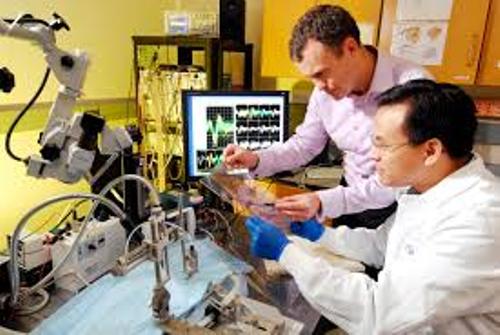10 Facts about Biomolecules
If you want to know the molecules that you can find in the living organisms, check facts about Biomolecules. The sizes of the molecules can be small or big. The secondary metabolites and primary metabolites are the examples of the small molecules. The large molecules can be seen in lipids, proteins, nucleic acids and polysaccharides. Get more interesting facts about Biomolecules here.
Facts about Biomolecules 1: Nucleosides
When a nucleobase is attached to a ribose or deoxyribose ring, it can create nucleosides. The examples of the molecules include inosine (I), adenosine (A), cytidine (C), thymidine (T), guanosine (G), and uridine (U).
Facts about Biomolecules 2: the polymer
The polymer is used to call the linear and long molecules. Both RNA and DNA are included as polymers.
Facts about Biomolecules 3: Lignin
Lignin is considered as the second plentiful biopolymer. The first one is taken by cellulose. The beta-O4-aryl linkages are the main component of lignin. You can find it in most plants.
Facts about Biomolecules 4: lipids
The basic building block of the biological membrane is made of lipids. The primary component of lipid is the fatty acid esters.
Facts about Biomolecules 5: the fatty acid
The unsaturated fatty acid is made by the double bonds of unbranched chains of carbon atoms. On the other hand, the saturated fatty acids are made of the single bond of unbranched chain of carbon atoms.
Facts about Biomolecules 6: the number of carbon atom
The number of the carbon atoms is always in even number. It usually consists of 14 to 24 carbon atoms.
Facts about Biomolecules 7: the 20 carbon fatty acyl units
The 20 carbon fatty acyl units can be seen in leukotrienes and prostaglandins. Both are also the types of the lipids.
Facts about Biomolecules 8: Amino acids
Other Biomolecules are amino acids. The components include carboxylic acid and amino. Some examples of amino acids in the living organism include taurine, GABA, ornithine and carnitine. The primary structure of the protein is made of a series of amino acids. The genetic of an individual can be seen from its sequence.
Facts about Biomolecules 9: alpha helix and beta sheet
Alpha helix and beta sheet are the types of protein classified based on the hydrogen bond pattern. If you want to know the secondary structure of protein, you need to check their arrangement and number. Find out biology facts here.
Facts about Biomolecules 10: Apoenzymes
Apoenzymes are important for the living organism for they have the function for protein’s secretor and as inactive storage.
Do you have any comment on facts about Biomolecules?








